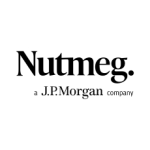How to achieve 10%+ growth returns, even if the market goes down
Last updated: 05/01/2016
Although there are many reasons why investors ultimately decide to go ahead and invest or not, timing the stock market is one of the most commented areas in investor behaviour. So what market conditions lead us to consider whether now is the right time to invest or not? Perhaps two of the most common are when markets are trading at historically high levels, and when markets are particularly volatile. Therefore should both of these market conditions prevail at the same time, which we have experienced during 2015, then the self-questioning around whether to invest can increase significantly.
With this in mind, we take a look at a selection of investments that can still achieve 10%+ growth returns, even if the underlying investment has only risen by a very small amount or, in some cases, has even gone down slightly.
Popular in all markets?
By combining the ability to produce high growth returns, along with some capital protection against a falling market, these kick out investment plans offer a fairly unique blend of risk versus reward which has the potential to appeal to investors in a wide range of prevailing investment conditions. Although notably this type of investment has proved popular when markets are low (on the basis that the investor considers it more likely that the index will rise), these plans have also generated particular interest when markets are at historically high levels, as they have been for periods during 2015.
The potential for high returns
Whenever investors are considering when to invest and where to put their capital, perhaps the most appealing feature is the potential return on offer. All of the investments covered below offer a minimum of 10% for each year invested (not compounded). On the basis that a 7% return on your capital could be considered an investment level return, these are considered to offer the potential for high growth returns.
Example – potential 10.0% after just 12 months…
“The FTSE/STOXXX Defensive Kick Out Plan from Focus offers 10.0% for each year invested (not compounded) provided the value of the FTSE 100 Index and the Euro STOXX 50 Index (made up of the 50 leading blue chip companies in the Eurozone) are at or above a specified level at the end of each year. If either or both Indices close below the required level each year, no growth return will be paid and your capital is at risk if one or both Indices has fallen by more than 40% at the end of the plan, in which case you could lose some or all of your investment.
Depending on your view of the UK and European markets, this plan could offer a compelling combination of high growth potential along with some capital protection should markets fall.”
Returns even if the market stays relatively flat
Many kick out investments are designed to provide returns even if the market has stayed relatively flat. This means that even if the stock market has only gone up by a small amount, you would still receive the full growth return. So if you’re not convinced the markets will rise in the future and yet still wish to achieve double digit returns, the opportunity to beat the stock market in conditions such as these could be a compelling investment story, and perhaps helps to explain why this type of investment has proved particularly popular with our investors.
Example – potential 10.0% even if the FTSE only rises a little
“The Enhanced Kick Out Plan from Investec will return 10.0% for each year invested (not compounded) provided the value of the FTSE 100 Index at the end of each plan year is higher than its value at the start of the plan (subject to averaging). If the FTSE is lower at the end of every year, no growth will be achieved and your initial investment is returned in full unless the FTSE 100 Index falls by more than 50% during the term, in which case you could lose some or all of your initial investment.
This plan is one of our best selling growth investments and the potential 10.0% on offer from this latest issue is its highest headline return seen since the start of 2013.”
Double digit returns even if markets fall slightly
There are also a number of kick out plans that will provide double digit growth returns even if the underlying investment(s) falls slightly, for example up to 15% or 20%. These so called ‘defensive’ kick out plans thereby cater for a wider range of investor views as to what could happen to the stock market in the coming years. Whilst stock markets remain at what are historically still relatively high levels, this can prove to be a popular feature.
Example – potential 12.0% each year, even if markets fall up to 20%
“The Investec Dual Index Step Down Kick-Out Plan offers 12.0% for each year invested (not compounded) provided the value of the FTSE 100 Index and the Euro STOXX 50 Index (made up of the 50 leading blue chip companies in the Eurozone) are above a specific level at the end of each year, compared to their values at the start of the plan. The required levels are 100% at the end of year two, reducing by 5% each year thereafter down to 80% in the final year.
If either or both Indices close below the required level each year, no growth return will be paid and your initial investment will be returned in full unless one or both Indices has fallen by more than 50% during the term of the plan. If this does occur, your capital is at risk depending on the worst performing Index and so you could lose some or all of your investment.”
Some capital protection from a falling market
When comparing the risk versus reward of any investment it is important to understand the circumstances when your initial capital could be lost. With kick out investments your original capital is returned if the plan kicks out, but should this not occur then typically your capital will be returned provided the underlying investment has not fallen below a certain amount, normally a percentage of its value at the start of the plan.
To put this into context, for a plan which offers a return of capital unless the FTSE falls by more than 50%, then based on this morning’s (27/10/2015) opening value of 6,471.0, the Index would have to fall to a closing level of 3,235.5 before your capital would be at risk, a level not seen since 1995. However, if it does fall below 50% you could lose some or all of your initial capital. Please also remember that past performance is not a guide to future performance.
Understanding counterparty risk
One of the main differences with structured investment plans when compared with other types of investments, such as funds or investment trusts, is that your capital is used to purchase securities and it is these securities which are designed to produce the stated returns on offer. These securities are normally issued by a bank which means that your investment is held with a single institution rather than split between a number of companies, as it would be within, for example, an investment fund.
This means the risk of the bank becoming insolvent and therefore unable to repay your original investment along with any stated returns becomes a factor to consider – this is known as counterparty risk. Since the counterparty is usually a bank, the credit rating is normally available so a view can be taken on the potential risk involved. There are also plans which aim to reduce this counterparty risk by spreading it across a number of institutions.
Defined return, defined risk
One of the main features of kick out investments is that the potential returns on offer are stated up front, and so are known before you commit your capital. This allows the investor to consider the potential upside in the context of the amount of risk they are taking, since you know at the outset exactly what needs to happen in order to achieve any stated returns as well as a return of your initial investment. This can then be used to make an informed decision about whether to proceed or not by comparing the defined return and defined risk with alternative investments.
Fair Investment view
Commenting on kick outs as a potential plan to consider, Oliver Roylance-Smith, head of savings and investment at Fair Investment Company Limited, said: “With markets continuing to make investors think very carefully before committing their capital, kick out plans have proved to be a popular choice by offering an often compelling balance of risk versus reward”.
He continued: “Although they should be considered fixed term plans, the opportunity to mature early, sometimes in as little as 12 months, is clearly an appealing feature for both savers and investors. Combined with the potential for high investment returns, even if the market stays relatively flat or in some cases even goes down, and it is understandable why this type of investment could be seen as an attractive opportunity in any investment climate, but especially when markets continue to trade at historically high levels.”
Latest selections
Click here for the latest kick out investments »
Click here for the latest defensive kick out investments »
Click here for our experienced investor section »
No news, feature article or comment should be seen as a personal recommendation to invest. Prior to making any decision to invest, you should ensure that you are familiar with the risks associated with a particular investment. If you are at all unsure of the suitability of a particular investment, both in respect of its objectives and its risk profile, you should seek independent financial advice.
Tax treatment depends on your individual circumstances and is based on current law which may be subject to change in the future. Always remember to check whether any charges apply before transferring an ISA.
Kick out investment plans are structured investment plans that are not capital protected and are not covered by the Financial Services Compensation Scheme (FSCS) for default alone. There is a risk of losing some or all of your initial investment. There is also a risk that the company backing the plan or any company associated with the plan may be unable to repay your initial investment and any returns stated. In addition, you may not get back the full amount of your initial investment if the plan is not held for the full term. The past performance of individual shares, the FTSE 100 Index and the EURO STOXX 50 Index is not a guide to their future performance.
Tags





